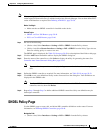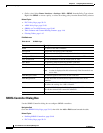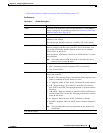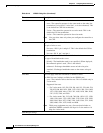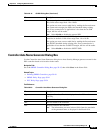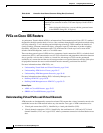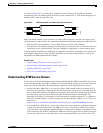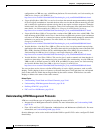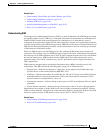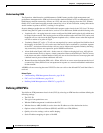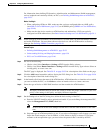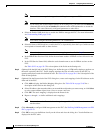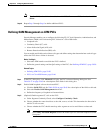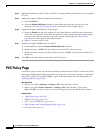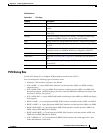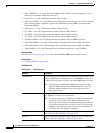
59-49
User Guide for Cisco Security Manager 4.4
OL-28826-01
Chapter 59 Configuring Router Interfaces
PVCs on Cisco IOS Routers
Related Topics
• Understanding Virtual Paths and Virtual Channels, page 59-46
• Understanding ATM Service Classes, page 59-47
• Defining ATM PVCs, page 59-50
• Defining OAM Management on ATM PVCs, page 59-53
• PVCs on Cisco IOS Routers, page 59-46
Understanding ILMI
The Integrated Local Management Interface (ILMI) is a protocol defined by the ATM Forum for setting
and capturing physical layer, ATM layer, virtual path, and virtual circuit parameters on ATM interfaces.
ILMI facilitates network-wide autoconfiguration by enabling devices to determine the status of
components at the other end of a physical link and to negotiate a common set of operational parameters
to ensure interoperability. The ATM routing protocols, PNNI (Private Network to Network Interface) and
IISP (Interim-Interswitch Signaling Protocol), use this information to discover and bring up a network
of interconnected ATM switch routers.
When two ATM interfaces run the ILMI protocol, they exchange ILMI packets across the physical
connection. These packets consist of SNMP messages as large as 484 octets. ATM interfaces encapsulate
these messages in an ATM adaptation layer 5 (AAL5) trailer, segment the packet into cells, and schedule
the cells for transmission. ATM interfaces use the SNMP object IDs in network functions such as
permanent virtual circuit (PVC) autodiscovery, which is particularly useful in digital subscriber line
(DSL) applications.
ILMI organizes managed objects into multiple information bases (MIBs), including one for link
management. This MIB contains the following object groups for all ATM interfaces:
• Physical layer—ILMI 4.0 discontinues or "deprecates" earlier physical-layer ILMI values and
specifies the use of the standard Interface MIB (RFC 1213).
• ATM layer—Indicates the number of available bits for VPI and VCI values in the ATM cell header,
maximum number of virtual path connections (VPCs) and virtual channel connections (VCCs)
allowed, number of configured PVCs, and so on.
• Virtual path connection—Indicates the up or down status of a VPC and its Quality of Service (QoS)
parameters.
• Virtual channel connection—Indicates the up or down status of the VCC and its QoS parameters.
Administrators may enable or disable ILMI at will, but we highly recommend you enable it. Without
ILMI, you must manually configure many of the parameters otherwise managed by ILMI for the ATM
devices to operate correctly. ILMI operates over a reserved PVC of VPI=X, VCI=16.
Related Topics
• Understanding ATM Management Protocols, page 59-48
• PVCs on Cisco IOS Routers, page 59-46



